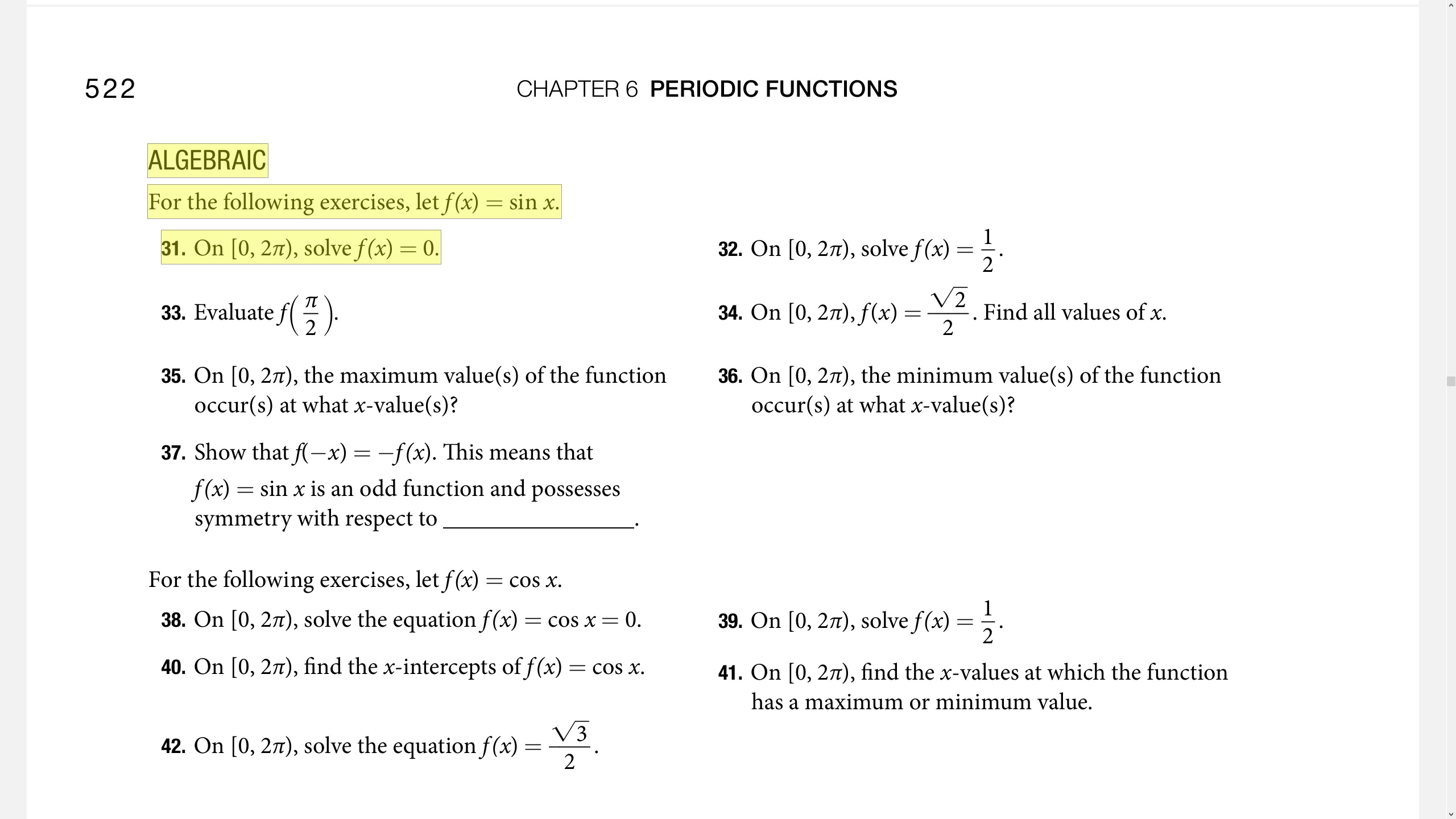I've been knocking out the trig problems in this section with minimal difficulty so far, but I've run straight into a brick wall on this "Algebraic" part. I'm asked to find sin(x)=0 between [0,2π). If I graphed the unit circle this would be a trivial exercise to show sin(θ)=0 when θ=0 or π.
Where I have trouble is- I'm very explicitly being told here that the solution is ALGEBRAIC, and I'm struggling to figure out a way to rearrange sin(x)=0 to come up with the known answer. Further, unit circles are not in this chapter, they wouldn't likely ask me to exercise a skill taught in another chapter. What am I missing?
It's not just 31, either. Looking ahead at eg 37, I can easily show sin(-x) = -sin(x) on a unit circle. I could maybe fuck around with inverse trig ratios but those are in section 3- this is only section 1.
Help me out here, drop a hint, share a link: how do I solve sin(x)=0 on [0,2π), but algebraically? I suspect it's something glaringly obvious and/or very very simple I've overlooked.

You are solving for x. To separate x from the sin function, you should use the inverse sin function (or arcsin). Do this to both sides of the equation and you will be left with x = arcsin(0)
Okay, like I get that, but I don't think that's the procedure intended by the author. For one, it will only give me one of the two correct solutions in this ~~range~~ domain. For another, I'm not supposed to know about inverse functions yet, that's two sections ahead.
Nope. When you use sqrt to solve y=x^2 , you are expected to recognize that sqrt is only the inverse of the right branch of the parabola. Likewise, arcsin is only the inverse of the sine limited to +/-pi/2, so you have to use it intelligently as a tool, not blindly as a black box.
The point they made was correct. Arcsine by itself only gives one of the two solutions to sinx=0. It seems like they already realize that they need to use arcsine carefully if they use it at all.